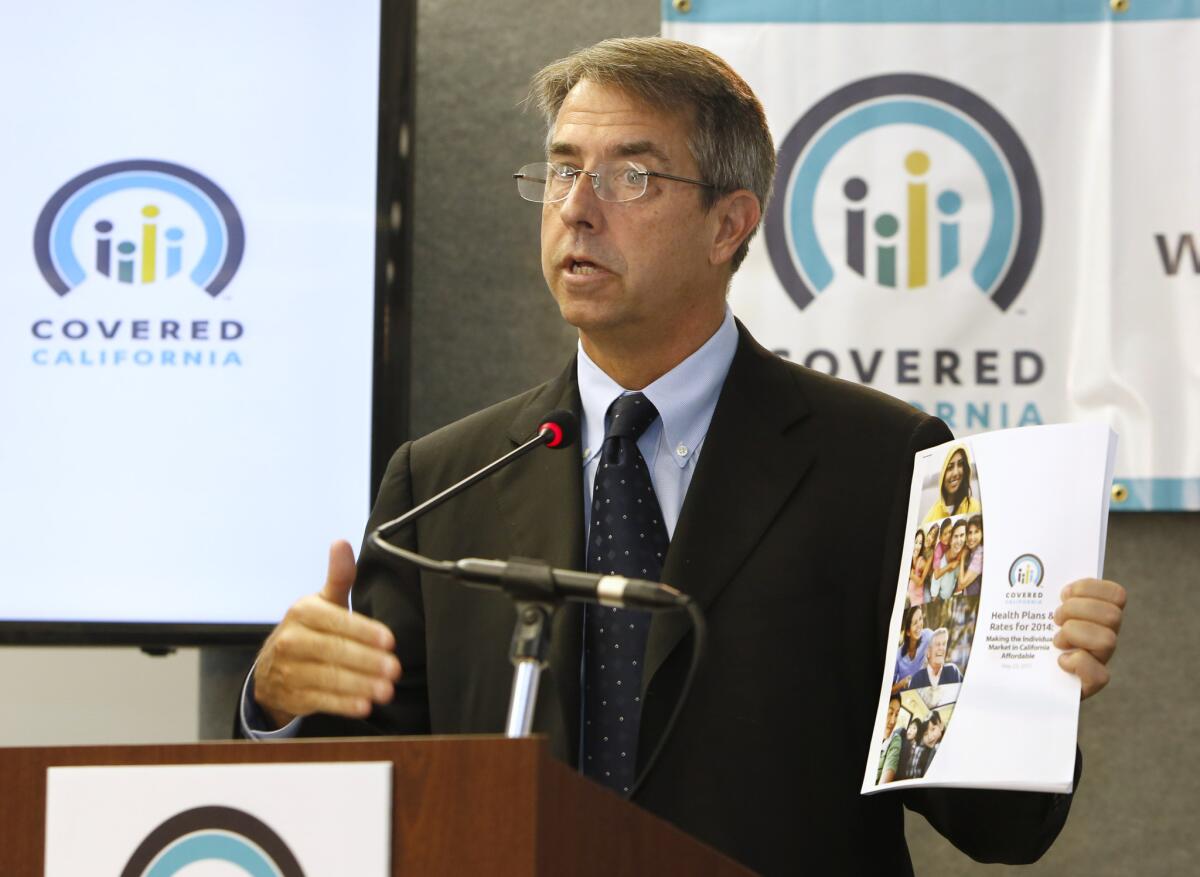Good news on health costs

The state’s new health insurance exchange gave an encouraging preview Thursday of the sweeping effects that the 2010 federal healthcare law will have on consumers next year, announcing lower-than-expected prices for individual policies. Still, the success of the exchange — which goes by the name Covered California — hinges on its ability to attract a large number of uninsured Californians to its policies, and to persuade health plans, doctors and hospitals to hold the line on costs. If it doesn’t, Covered California could face a vicious cycle of ever-escalating premiums and dwindling customers.
The Patient Protection and Affordable Care Act tries to rein in healthcare costs by improving the way care is paid for and delivered. But to stop insurers from cherry-picking applicants and offering insubstantial policies, the law is expected to cause premiums to jump in the short term, especially for younger, healthier adults. A recent study warned that average premiums for those not covered by group plans could rise more than 30% in the coming year, in part because the policies provide more comprehensive coverage with lower out-of-pocket costs.
The premiums announced by Covered California on Thursday vary from region to region, but on average the increase appears to be well below the study’s prediction. Blue Shield estimates that its premiums will be 13% higher — about half of that reflecting the cost of the law’s insurance reforms and subsidies, with the rest stemming from the higher cost of treating patients. The increase shrinks when you factor in lower co-payments and other out-of-pocket costs. And although younger customers could see higher increases, older ones are more likely to have their rates cut.
Plan executives say the exchange has yielded some much-needed changes in the way healthcare is paid for and delivered. Hospitals and physician groups are being pressed not just to charge less for their services but to coordinate care better and improve quality. The exchange’s standardized benefits add to this pressure by forcing plans to compete solely on their premiums and the quality of the doctors and hospitals they have enlisted, not by offering a range of intricate and confusing coverage options.
These efforts won’t be much help, though, if Covered California doesn’t sign up a significant percentage of the 7 million uninsured Californians. The subsidies in the 2010 law will help by cutting premiums for low- and moderate-income residents. But the rest will have to be convinced that it’s worth paying $1,360 or more next year instead of facing a $95 tax penalty. Everybody benefits from having fewer uninsured, who obtain care in the least efficient and most expensive way. The challenge for the exchange is convincing those who have been uninsured by choice that they would be better off with coverage than without it.
More to Read
A cure for the common opinion
Get thought-provoking perspectives with our weekly newsletter.
You may occasionally receive promotional content from the Los Angeles Times.










